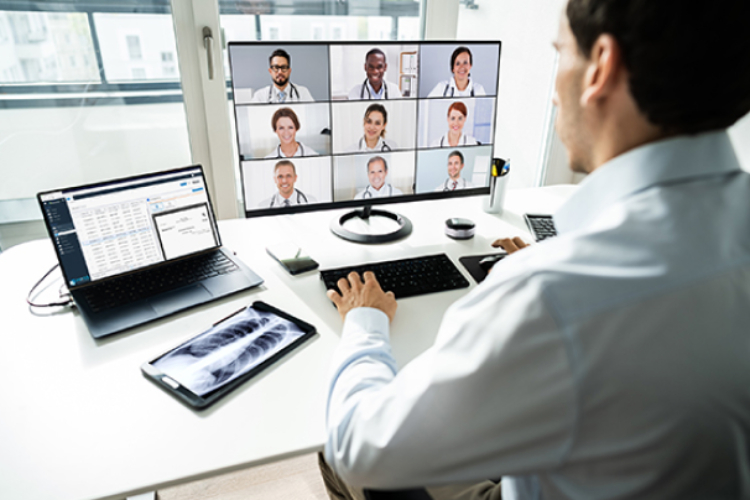In the field of radiology, patient engagement is a key factor in providing successful patient outcomes. Patients must be able to communicate effectively with their healthcare providers and have access to the necessary resources and information to make informed decisions about their care. By utilizing technology to enhance radiology patient engagement, healthcare providers can ensure that patients are able to access the necessary services and resources to make informed decisions about their care. Technology can be used to facilitate patient education, communication, and access to services, such as online appointment scheduling, remote consultations, and access to patient portals. Technology can also be used to streamline the workflow of healthcare providers, allowing them to spend more time with their patients.
The Benefits of Technology in Radiology Patient Care
Technology has revolutionized patient care in the field of radiology. For radiologists, modern technology has allowed them to provide better, faster, and more accurate diagnosis and treatment of illnesses and injuries. Radiologists are now able to use technology to detect cancer and other diseases earlier, and provide more precise treatment plans. For patients, technology has made the radiology experience more convenient, comfortable, and efficient.By utilizing technology to enhance radiology patient engagement, healthcare providers can ensure that their patients receive the best care possible.
One of the biggest advantages of technology in radiology is the ability to take digital images. Digital images are more detailed than traditional x-rays, allowing radiologists to detect small abnormalities that may go undetected with traditional methods. Digital images can also be stored in databases, making them available for review and comparison over time.
Technology has also made the process of obtaining radiology images more comfortable and convenient for patients. Modern technologies, such as computed tomography (CT) and magnetic resonance imaging (MRI) scanners, allow radiologists to acquire images without exposing patients to radiation. Additionally, advances in technology have enabled radiologists to obtain images from multiple angles, making diagnosis even more accurate.

Leveraging Technology To Improve Radiology Patient Satisfaction
Technology has also had a positive impact on patient satisfaction. Radiologists are now able to provide faster and more accurate diagnosis and treatment plans, which has led to improved patient satisfaction rates. Additionally, technology has allowed radiologists to improve the patient experience by making it more comfortable and convenient.
For example, modern technologies, such as picture archiving and communication systems (PACS) and radiology information systems (RIS), have enabled radiologists to streamline their workflow and provide a more efficient patient experience. PACS and RIS systems allow radiologists to store images and patient information in a single location, reducing the need for paperwork and allowing for faster diagnosis and treatment.
Increasing Patient Engagement Through Technology
Technology has also enabled radiologists to increase patient engagement in their care. For example, some radiologists are now leveraging telemedicine technology to provide remote consultations and care to their patients. This has enabled radiologists to increase the reach of their practices and provide care to more patients.
Integrating Technology Into Radiology Practice For Improved Patient Outcomes
Radiologists are now using technology to improve patient outcomes. For example, some radiologists are using artificial intelligence (AI) to identify and monitor diseases and abnormalities more quickly and accurately. AI also enables radiologists to detect and monitor diseases and abnormalities that may have previously gone undetected. Additionally, AI can also be used to compare patient scans over time, helping radiologists to track changes in a patient’s condition and adjust treatment plans accordingly.
Engaging Patients Remotely With Technology
Technology is also allowing radiologists to engage with their patients remotely. For example, some radiologists are using telemedicine to provide remote consultations to their patients. This has enabled radiologists to reach more patients and provide more personalized care to those who may not be able to come into the office. Additionally, some radiologists are using virtual reality technology to provide remote simulations of procedures and treatments, allowing patients to become more familiar with the process before their appointment.
Enhancing Radiology Patient Experience with Technology
Technology has also enabled radiologists to enhance the patient experience. For example, some radiologists are using virtual reality technology to provide immersive simulations of procedures and treatments, allowing patients to become more familiar with the process before their appointment. Additionally, some radiologists are using artificial intelligence to provide real-time feedback to patients on their treatment plans and progress. This can help patients to better understand their diagnosis and more effectively manage their care.
Streamlining Radiology Patient Care with Technology
The technology has also enabled radiologists to streamline patient care. For example, some radiologists are using PACS and RIS systems to store images and patient information, reducing the need for paperwork and allowing for faster diagnosis and treatment. Additionally, some radiologists are using robotic systems to automate routine tasks, freeing up time for radiologists to focus their attention on more complex cases.
Conclusion
Using technology to enhance radiology patient engagement is a powerful way to provide better patient experiences and health outcomes. It can help to reduce wait times, increase patient satisfaction, and help patients stay better informed about their care. Through technology, radiologists can also deliver better, more personalized care and provide more efficient services. Overall, technology can help to improve patient engagement in radiology and lead to better health outcomes.
